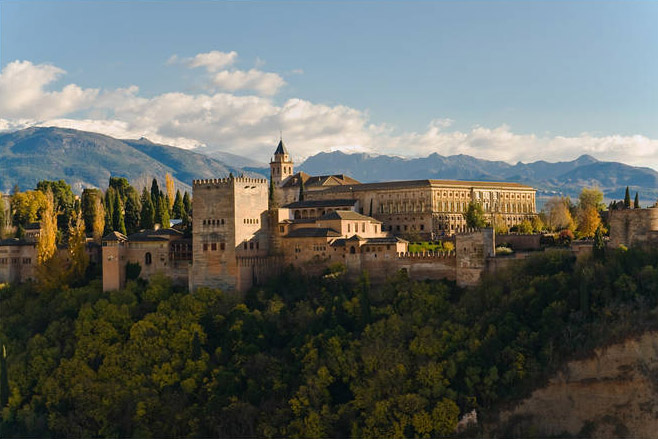The Alhambra in Granada


The Alhambra in Granada. Declared a World Heritage Site, is undoubtedly the most emblematic monument of the city and one of the most visited in Spain. It consists of a defensive side, the Alcazaba, the Nasrid Palaces and the Generalife Gardens.
The Alhambra emerged on the hill called La Sabika, also known as San Pedro or the Red Hill, by the color of their land. In this hill there was a very old fortress, perhaps the s. IX, and on it the first king of the Nasrid dynasty, called Alhamar, began construction. The year was 1239.
We take a walk through it, discovering its palaces, fountains, gardens, towers and gates. The Alhambra was a city for the Moorish king, his government and his knights. Also lived many people dedicated to work on it.
Hill is the highest elevation around Granada. It is a citadel because within its walls was a real city, with all means necessary. However it should be considered as a city for royalty inserted, yet separate, in the city or medina of Granada. Let’s say it was like a private city.

As we see is elongated and rather irregular and must adapt to uneven Sabika mount. Its length is 2,428 feet and its width varies between 590 feet and 132 feet.
It is surrounded by a wall that is double in some areas with 27 towers that had different functions, most served for defense but others served as homes, even some of them were like palaces. You could access it by four gates: Gate of Arms-in-Alcazaba, the suburb-in-Peak Tower, Seven Floors-south-and-also Justice or south Esplanade.
His name is not very clear. Some believe it is because it was built at night under the glare of the torches. Others say it’s the name of your builder female Alhamar and therefore be called The Red Alhamar wife.

This monument is the most important and beautiful of those built in the world Islam. Welcoming more than 2,200,000 visitors a year. Watching her from the Mirador of San Nicolas, Bill Clinton said he attended «the most beautiful sunset in the world». Its walled town occupies 104,697 meters square, in addition to so many of the Generalife. The first references to al-Qal’a Alhamra («The Red Fortress») are the ninth century, but it is from 1238 when the Nasrid Sultans there begin to build their buildings, in principle defensive. The main palaces and rooms were built at various times between the early fourteenth century and the second half of that century. Its walls are traveled by thousands of verses inscribed on them: only in the Comares Palace are documented more than 3,000 inscriptions in Arabic. It was declared a National Historic Landmark in 1870.